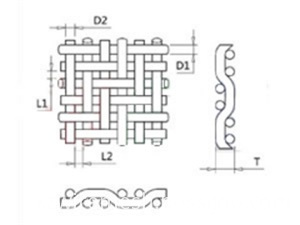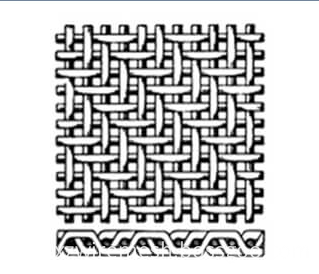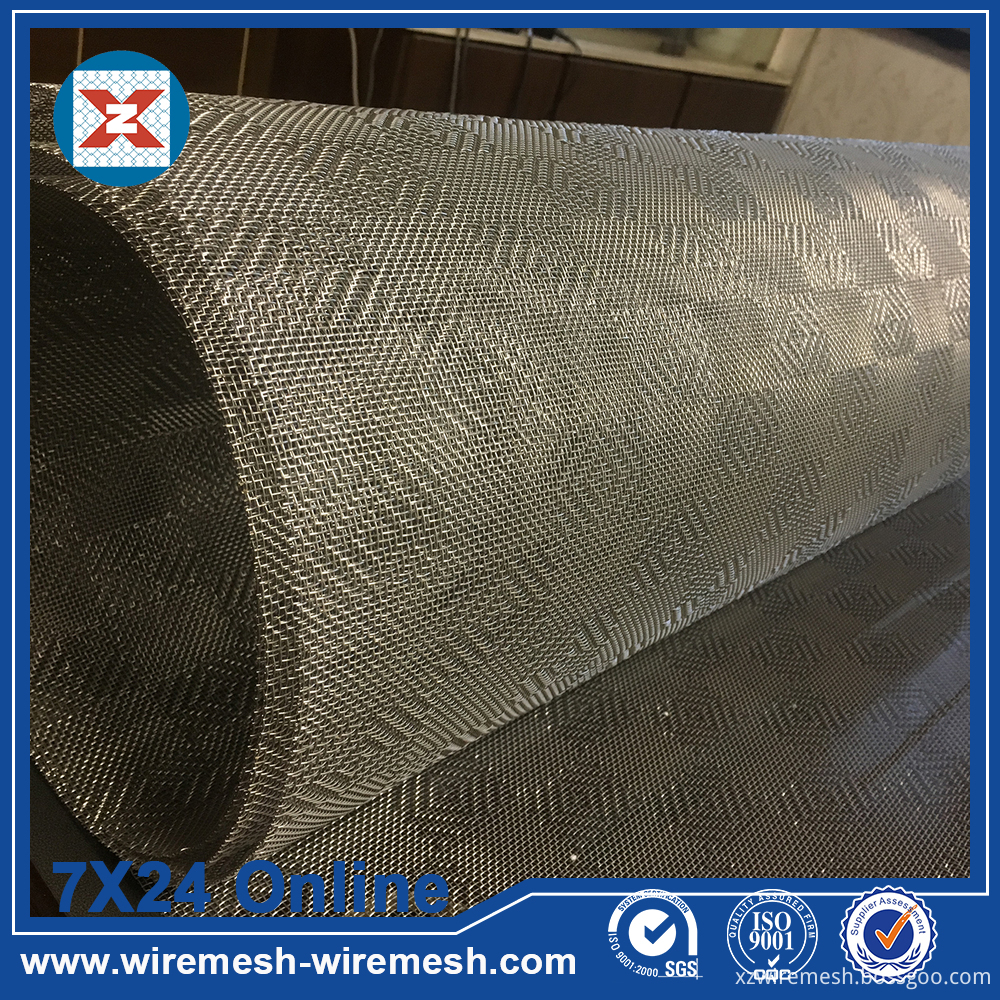First, the image clarity. It is a reflection of a comprehensive index that is first determined by the horizontal resolution of the CCD. Although different manufacturers produce CCDs with quality differences. The CCD of the same brand also has a grade difference, but in fact there are only two levels of CCD: about 330 lines of the solution, and about 480 lines of high resolution. There is no 420 line that is commonly used in China. Since the vertical resolution is a fixed value (PAL scans 625 lines, minus 40 line blanking time per frame, in reality 585 TVL), it is determined by the television system. The only indication of camera performance can only be the horizontal resolution, which in turn is determined by the inherent pixels of the CCD and the back-end processing clock frequency and sampling frequency. Since the actual high-efficiency band filter determines the image signal frequency is about 6Mhz. Therefore, the maximum horizontal resolution can only reach 480TVL. With the continuous improvement of production technology, recently foreign manufacturers DSP processing can reach 7MH high-pass filter, so that the horizontal resolution of about 520 lines. For the lighting element CCD, there is no major technological breakthrough in the world. Whether the image is clear In addition to the camera's own CCD indicators, the back-end signal processing such as: the edge of the circuit, contrast, color reproduction, signal to noise ratio, and even when the lens is installed in the project installation is accurate and so on. There are many factors that affect visual clarity. In addition to the bank teller system monitoring requires close physical access, the use of high-line cameras to distinguish details, the general security monitoring in fact does not require high resolution of the CCD. A camera with better indicators is difficult to distinguish between 520 lines, 480 lines, and 330 lines with the naked eye. Unless otherwise distinguished by professional inspection equipment or image enlargement processing. (The meaning here does not mean that the resolution is not important, mainly refers to the visual clarity is the multiple factors that affect the results)
Second, the subject illumination minimum illumination LUX. It is another important technical indicator of the camera. With the expansion of the use of security projects, more and more projects are required to see the images at night, so they have to produce day and night cameras. Please note that the illuminance (sensitivity) of the lowest subject is related to the sensitivity of the CCD itself and to the condition being measured. It is not possible to look at the LUX value but the measurement condition. Such as: light source color temperature, maximum gain, select the lens and other conditions under the y fixed illumination only comparable. General standard measurement conditions Light source color temperature should be 3100K +-100K; maximum gain (AGC) 20db-26db, black and white images can be appropriately increased to 32 db, otherwise the image noise increases, will affect the clarity, the signal to noise ratio is poor; when the lens was selected The measured value of the measured object should be marked with the lens brightness value (F1.2 transmittance). The smaller the selected lens number, the lower the lux of the LUX. Because users can not choose F0.9 or F0.75 lens (high value). Therefore, we need to pay attention to the illuminance of the camera under the same lens conditions (such as F1.2 ~ F1.4), only to be comparable.
Speaking of illuminance involves color to black and white, infrared, filter switching, dual CCD, etc. are all camera functions derived to meet the low illumination requirements.
Color to black and white camera: It is a color camera that outputs color images when the illumination is sufficient in the daytime. When the light turns dark at night, it turns off the color components to black and white images. At the same time, it increases the AGC to increase the gain, and can increase the brightness of the image. This increases the cost and the cost is not high. The effect is not obvious either.
Sense infrared camera, infrared sense is divided into two. The low-grade filter does not remove the filter (IRCUT) on the front of the CCD, but changes the light-passing wavelength of the filter appropriately so that part of the infrared wavelength light enters the CCD sensor. This type of camera sacrifices color reproduction to cause color casts. To make up for this deficiency, manufacturers generally deliberately reduce the color density, making the color screen look paler, whiter, and reducing the human eye's feeling of color cast. The other is a high-grade day and night camera. In addition to using a high-sensitivity CCD, the technology uses an automatic feedback principle. When the light is dark, the electrical signal is weakened, and the small mechanical device is started so that the filter does not block the CCD. , CCD sensor full spectrum, while turning off the color components, so that the screen into a black and white image, making it a complete black and white video camera, this will not only improve the sensitivity of the CCD, but also the induction of infrared light. During the day when the illuminance reaches 6=10 LUX or so, the feedback motor is started again, and the filter again blocks the CCD so as not to affect the infrared during the day and does not affect the reproducibility of the color. Such a camera is currently a real day/night camera. It must be clarified that the so-called dual-use day/night camera is not able to see objects at night without the aid of light. It is nothing more than high sensitivity, but even the best day/night cameras can only achieve the effect of black and white cameras.
With infrared light integration camera, this camera is the most popular mode in the domestic market, it is designed to meet the needs of the domestic market day and night, low-cost needs. Due to the improved quality and low price of infrared LED light emitting diodes, manufacturers combine infrared light and simple type cameras to meet users' needs. Due to the previously described method of not removing the infrared ray of the filter, such a camera can only be made into a low-grade camera with a low resolution and a slight color cast, which is not suitable for use in a regular security project. Such a machine has one. Fatal weakness, poor reliability. Since the infrared lamp is a heating element, and the camera is a heating element (usually a single-chip microcomputer in China), the two heats collide with each other. If the processing is not good, the failure rate will greatly increase. However, it is generally used in occasions with low requirements, or there is a certain price advantage.
There are also other ways to use the field accumulation method to improve the illuminance camera of the object at night, that is, to reduce the speed of the electronic shutter to improve the sensitivity of the CCD, but the noise component will increase, the moving object will appear smearing, the image blur phenomenon, not too much actual Meaning, it is not recommended.
Dual CCD cameras use two color, black and white different CCD single-chip cameras, using light-sensitive switching output circuits, such cameras generally have infrared lights.
Third, ultra-wide dynamic, strong light suppression, strong light inversion
These functions are not the basic indicators of camera shooting, but are the functions added by camera manufacturers to meet the special needs of customers.
Ultra-wide dynamic: In fact, it is an enhanced type of backlight compensation (BLC). It adopts multi-point collection of photoelectric signals in signal processing, calculates an average exposure amount, and controls the electronic shutter speed so that both can see the image objects. . This type of camera will generally have a higher price, and it is only suitable for certain banks facing the street business counters and places with great shade.
Strong light suppression, strong light reversal: only for the development of the road monitoring camera, because the road monitoring at night not only requires low illumination, but because of the lights, the glow of the street lamp makes the surrounding objects can not be clearly identified, Some also need to see the license plate. To this end using 1/2 inch CCD, improve the sensitivity of the CCD to increase the amount of light, to achieve low illumination, to suppress the use of ultra-wide dynamic halo does not work, light circuit to make the evening strong light to make it not spread, does not affect Ambient brightness, so that the high brightness of the light is limited to its own round light range, this technology is very difficult, the general camera manufacturers are difficult to achieve the desired effect, the current camera should be the highest processing circuit technology. Therefore, the price of the camera is very high.
Fourth, the camera's other technical indicators and the direction of development
In addition to the three functional indicators in the camera, there are still some indicators that are not noticeable.
1. Signal-to-noise ratio, an important indicator for identifying whether the camera picture is clean, the general (AGC OFF) situation should be controlled between 48 ~ 52db, less than 48db image noise, generally low-grade camera this indicator basically can not reach.
2. The gamma coefficient is a contrast index. Generally, the camera has only 0.45 grades. The high-grade video camera has 0.8-1 grades. This is used when the photographed object is flat in the scene and is used to enhance the image layering, which greatly improves the vision. On the clarity.
3, automatic white balance: automatic adjustment of the environment under the light conditions, to maintain color reproduction, non-color cast, is the level of camera quality is extremely important evaluation criteria.
4, camera input voltage: In principle, color cameras must use AC input power, AC220V or AC24V, and can not use DC power supply, because the stability of the color signal depends on the AC synchronization signal is correct, otherwise it is easy to cause color drift. At present, the domestic use of DC input is generally adopted to reduce the color concentration so that the color drift is not obvious, which is not allowed according to international standards, the use of automatic aperture lens is to compensate for color drift problems.
5. The trend of the development of cameras in the future. With the increasing use of cameras, new requirements have been put forward for the intelligentization of cameras, such as image stabilization systems; automatic image recognition systems; automatic counting; automatic alarm systems, etc. Function, due to higher and higher degree of DSP integration, the camera's circuit is more and more simple, leaving enough space for intelligent software development, the future of the camera will set a number of automatic functions and image compression, storage, transmission One smart front-end device.
To sum up, how to properly select the right camera in the security project, the first condition is to fully understand the role of the camera's performance indicators, and then according to the specific conditions of the project, such as: natural environmental conditions, (mainly refers to the lighting conditions, whether Backlight, is there a glare, is it used at night, how does the auxiliary light source shine? The scope of the subject is the size? (Usually, the range of the object to be photographed is small, but the resolution is required to be high), the user's economic ability, etc. In order to make more accurate choices based on customer requirements, we have designed a safe and reasonable security engineering program.
Stainless Steel Twill Weave Mesh is a kind of wire cloth product with flat and smooth mesh, uniform mesh, no deformation, good extensibility and abrasion resistance. Twill weave Stainless Steel Mesh warp and weft threads interwoven from the adjacent strands - weaving in the direction of silk and shuttle.The movement of this upper and lower knitting is the movement of the shuttle.Twill weaving can be used to weave different specifications of mesh and mesh screen.
Material: 201, 304, 304 (L), 310, 316 (L), etc
Features: Features: stainless steel twill weave net is an acid, alkali resistant, high temperature, tensile and wear resistance strong product, has the filtering precision, the load strength high characteristics.
USES: Twill weave stainless steel mesh is widely used in aerospace, petroleum, chemical industry, scientific research and transportation, etc, used in acid, alkali environment conditions screening and filter, oil industry as mud mesh, chemical fiber industry as screen mesh, plating industry as pickling nets.
Extra tip: Stainless steel twill wire mesh gauge packaging must be strict, outer waterproof paper - moistureproof film - cushion film - cardboard packaging products in order to prevent wooden - damp impact in the transport process.


The warp wire (D1) : all longitudinal braided lines.
The weft wire (D2) : all horizontal weaving lines.
Aperture (L1 and L2) : the distance between two meridians or two weft.
Mesh number:number of metal mesh holes per inch.
Thickness (T) : thickness of the net.
Specifications:
|
SPEC |
WIRE DIAMETER |
APERTURE |
OPENING RATE |
WEIGHT(POUND) |
||
|
INCH |
MM |
INCH |
MM |
|||
|
200X200 |
.0021 |
.0533 |
.0029 |
.0737 |
33.6 |
6.2 |
|
250X250 |
.0016 |
.0406 |
.0024 |
.0610 |
36.0 |
4.4 |
|
270X270 |
.0016 |
.0406 |
.0021 |
.0533 |
32.2 |
4.7 |
|
300X300 |
.0051 |
.0381 |
.0018 |
.0457 |
29.7 |
3.04 |
|
325X325 |
.0014 |
.0356 |
.0017 |
.0432 |
30.0 |
4.40 |
|
400X400 |
.0010 |
.0254 |
.0015 |
.370 |
36.0 |
3.3 |
|
500X500 |
.0010 |
.0254 |
.0010 |
.0254 |
25.0 |
3.8 |
|
635X635 |
.0008 |
.0203 |
.0008 |
.0203 |
25.0 |
2.63 |
Products Photoes:

Stainless Steel Twill Weave Mesh
Stainless Steel Twill Weave Mesh,Stainless Steel Wire Cloth,Twill Weave Mesh,Stainless Mesh Wire
Anping Xinzheng Metal Wire Mesh Co., Ltd , https://www.sievingmesh.com